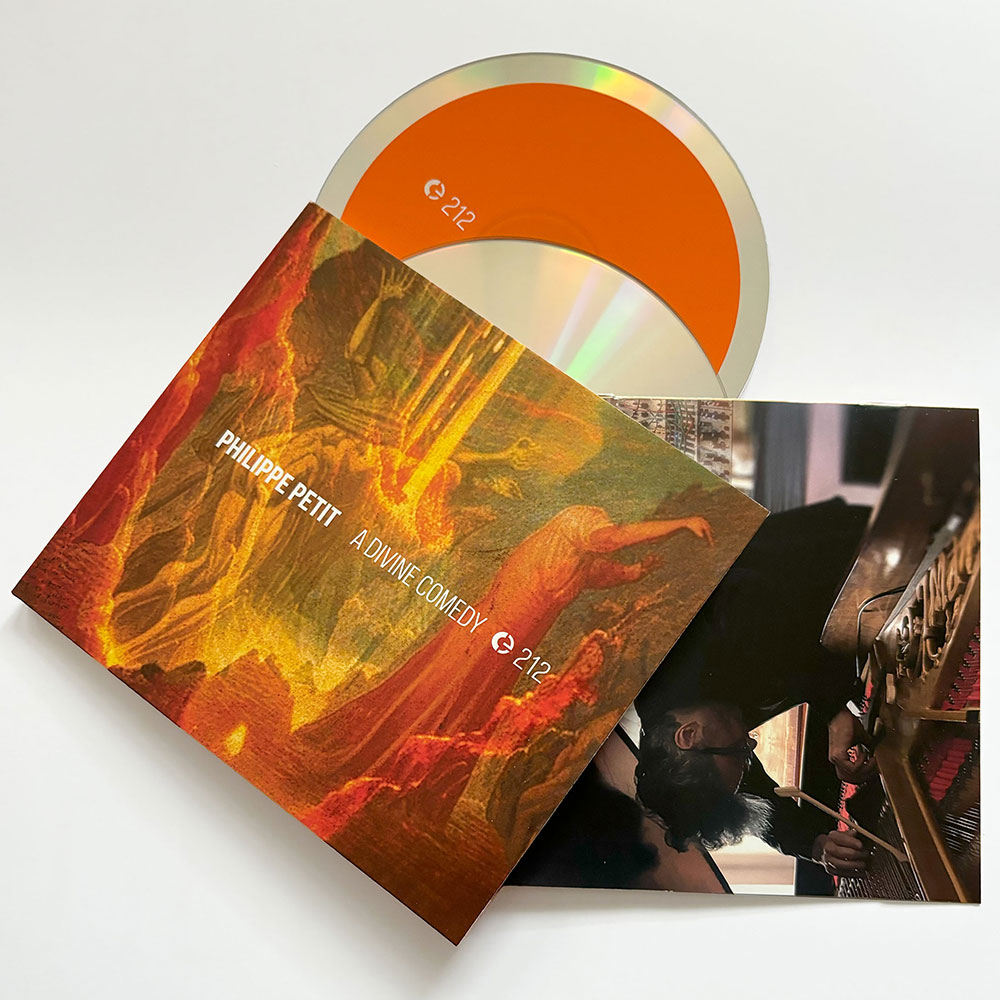Philippe Petit was inspired by Dante Alighieri’s poem and influenced by Gustave Doré’s illustrations, building a symphonic “palette” of musical pigments, pictorial tones, and textures that reconcile epic narrative and expressionist musical form. His aim is not to illustrate but rather to tell a story of an alternative world that is set in motion by paying attention to the perceptions and feelings of listeners. The moments in this story are stitched in an immersive journey of colourful music that listeners traverse as if watching a film or reading a novel.

Philippe Petit on A Divine Comedy
My desire was not to stick to the text but to take Dante Alighieri’s immense poem as a point of inspiration, the form of which consists of envisaging Expressionism as the projection of a subjectivity that tends to deform its reality in order to inspire an emotional reaction in the spectator-listener.
Bernard Parmegiani and François Bayle worked for more than twenty years in a multifaceted version intended to be a soundtrack, whereas I followed the idea of Franz Liszt, who, in order to put it into a symphony, based his inspiration on the journey.
While composing, I looked at the illustrated edition by Gustave Doré and imagined musical pigments, pictorial tones or textures forming a new symphonic “palette” trying to reconcile visionary epic narration and sound musical forms, in themselves non-significant. My aim was not to be illustrative but to be in motion! Representations are often based on distressing visions, distorting and stylizing reality in order to privilege a great expressive intensity.
The question at the centre of all, is linked to what one feels while listening. Paying attention to what you perceive at the moment you hear the work, following the road up to the right and down to the left, from one circle to the next, from one Bolge* to the next, how you will be carried by the music.
We cannot determine what or how the sound is made, and this magic is not disconnected from the pleasure of listening. You have to think in terms of magic, you know that there is a trick but it doesn’t matter how it is done, if the illusion becomes visible the magic delusion is no longer interesting, the illusion works if the composer-magician and his audience want to play along.
All that we hear never corresponds to the reality of the sound, it is a question of aural trickery, it is earlusionnism!
* A “bolge” is one of the ten concentric pits surrounded by walls and topped by rocky bridges similar to the outer fortifications of a castle and which constitute the “Malebolge”, the eighth circle of Hell.

